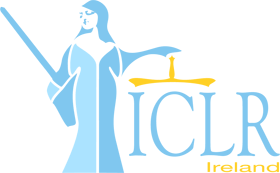The Superior Courts of Law
‘Official’ Law Reporting in Ireland 1866–2006
Eamonn G. Hall
- ISBN:
- 978 0 946738 08 3
- Format:
- Hardback (1 volume)
- Pages:
- 752
- Price:
- €75 (Order)
In a common law system such as ours, a coherent and impartial system of law reporting is essential if the law is to be known, properly commented upon and developed in an orderly and coherent fashion … [T]he general commentary and analysis of law reporting … could be read with profit by every lawyer.
This is a remarkable book in two quite separate ways. First, it is a plangent assertion of the centrality of the role of law reporting in our common law jurisdiction, and of the techniques, difficulties and triumphs of the reporting process.
Quite separately, it is a major contribution to Irish legal history, an insight into the view and personalities of some of its leading characters and an assertion of the continuity of the common law through epochal political changes. It is a noble work.
The Hon. Mr Justice Adrian Hardiman
Judge of the Supreme Court, From the foreword

Eamonn G. Hall
The judiciary of the superior courts of Ireland have been described as the ‘high priests of the law’. Knowledge of the law in pre-Christian times was, in part, reserved to the priests. In a metaphorical sense, the Irish judiciary of today have inherited the mantle of those earlier priests.
Dr Hall’s book is, in part, a celebration of case law (the law decided by the judges of the superior courts of Ireland), a history of an institution, the Irish Reports (Ireland’s oldest series of extant law reports) and the Law Reporting Council of Ireland founded in 1866. The Law Reporting Council held a monopoly in relation to the decisions of the superior courts for more than a century; this was so in a litigious country ‘the first adventure of the common law’. The monopoly of the Council was of some significance as the Council decided which judgments should be published in the ‘official’ series of law reports, ‘a ticket to immortality’ for some judges. These reported judgments were likely to become settled law; case law that was never reported had the serious potential of being consigned to oblivion.
The book also describes occasional tensions between the judges and the reporters. In one celebrated saga, a senior member of the judiciary developed a public degree of paranoia about the role of the Law Reporting Council of Ireland and its reported case law. This saga excited interest throughout the common law world.
The Irish Reports are conterminous with Irish life; the Irish Reports reflect the legal questions, and often political and social issues, great and small, that have preoccupied Irish society since the mid 1800s. Life, human life and corporate life, spring to the fore in the pages of the Irish Reports.
The book also contains a general commentary and analysis. The issue is posed whether the fecundity of Ireland’s case law, once a steadying influence, will have the effect that the citation of precedent (in its purest sense) will lose its cardinal primacy, and the judge will rely in future less on precedent and more on fundamental principles of his or her own choosing.
A feature of this book is a succession list of every judge of the superior courts, every member of the Law Reporting Council, including the Attornies General and Solicitors General (with biographical notes), and every editor and reporter of the Irish Reports since the Council’s foundation in 1866. Finally, the book contains portraits of judges, barristers and solicitors associated with the Council.
